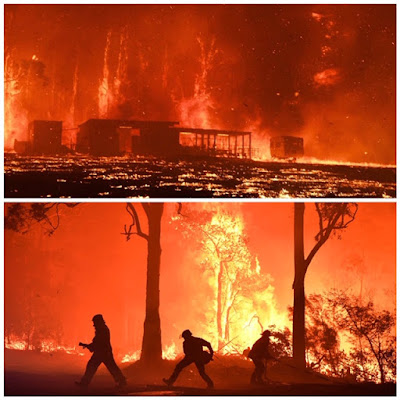It becomes a challenge to match these at home.
The components of a good cappo are the quality and volume of the expresso shot, the volume and temperature of the milk and the consistency and volume of the foam.
The first step is to find a decent expresso machine. These range from relatively cheap manual machines to extremely expensive fully automatic models.
To make an expresso, hot water has to be forced through ground coffee at a pressure of around 900 kPa (9 Bar). The perfect expresso results in a 30mL shot from 10g of coffee in 25 seconds.
Yes, this is all documented. I kid you not!
The expresso needs to show good crema ie. a red/brown foam which sits on the surface and is a mixture of vegetable oils, proteins and sugars. Not enough or light coloured crema means under extraction and a weak brew, too much dark brown crema means over extraction and bitterness.

So with a little research, we decided on a semi automatic Sunbeam coffee machine which is barista designed but with only a few bells and whistles.
He who cannot program a mobile phone cannot in all likelihood program a coffee machine!
A barista is a professional coffee maker. Our local technical college runs a barista course as part of its catering and hospitality certificate. They actually got a government subsidy to run the program!
It was not long out of the box when we realised that a well calibrated coffee machine is not the only key to success. To produce the "ultimate" expresso, the grind of coffee as well as the pressure of tamping ie. how hard the coffee is squished into the filter basket, is also a key factor.
Of course the former needed a Sunbeam coffee grinder with multiple settings (sound of cash register ringing…..again) as every type of coffee grinds differently.
It was not long out of the box when we realised that a well calibrated coffee machine is not the only key to success. To produce the "ultimate" expresso, the grind of coffee as well as the pressure of tamping ie. how hard the coffee is squished into the filter basket, is also a key factor.
Of course the former needed a Sunbeam coffee grinder with multiple settings (sound of cash register ringing…..again) as every type of coffee grinds differently.

Correct tamping is only achieved by trial and error and eventual reproducability by the operator.
Next is the coffee itself. We were always partial to the Caribou expresso blend which we brought home with us from the mid west of the USA but as this ran out quite quickly (despite the quantity imported sometimes raising eyebrows at customs…. "opening a grocery store are we, sir?") we were forced to find a locally available favourite. After numerous test tastings of local and imported brands, we eventually settled on Lavazza Qualita Oro from Italy.
The basis of most coffee drinks is the expresso shot. Lattes, mochas, flat whites etc. are all a matter of adding milk, which has been heated in some way, in a certain proportion.
A cappuccino is made up of one third expresso, one third steamed milk at a temperature of 75° C and one third microfoam ie. the consistency of whipped cream
A big no no is scalded or burnt milk as well as foam with large bubbles. The foam is created on the surface of the milk while passing steam through it to heat it up. The milk jug needs to be held on a 35° angle and turned in a way so the milk spins. A barista will know when the right consistency and temperature is achieved by the change of the sound of the steam passing through the milk and how hot the jug feels (again, I kid you not). Those temperature gauges you see clipped to the sides of the jugs at Starbucks et al are for amateurs.

Last but not least are the cups. They have to be the right size, have the right lip feel and have comfortable handles.
And don’t forget the chocolate sprinkled on the top.
Yes, I know. Quite a production for a humble cappo……but in the end, worth it!



















